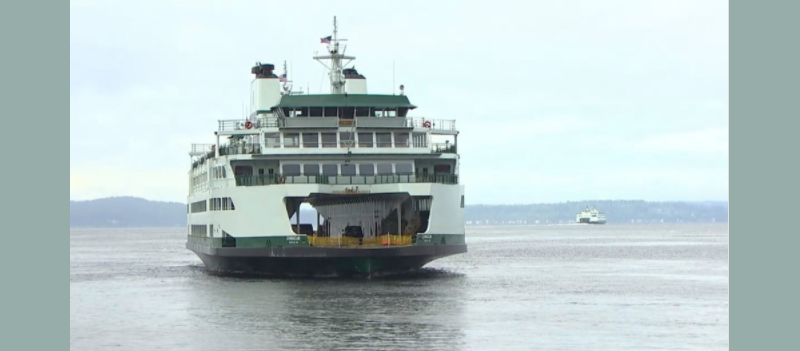||| FROM WASHINGTON STATE FERRIES |||
SEATTLE – Annual ridership aboard Washington State Ferries plunged by nearly 10 million customers in 2020 – a drop of 41% from the previous year – to roughly 14 million. Stay-at-home orders, remote work and decreased tourism because of COVID-19 are the main reasons for the system’s lowest yearly count since 1975.
For the first time since it began operations in 1951, WSF carried more vehicles (7.6 million) than passengers (6.4 million) last year. This shift in ridership was fueled by a dramatic decline in walk-on customers on routes that serve downtown Seattle and more people choosing to drive on board because of the pandemic.
“When COVID-19 drastically altered ridership patterns, we quickly adjusted service to match this new reality,” said WSF Assistant Secretary Amy Scarton. “Since late summer, we’ve been incrementally restoring sailings based on our COVID Response Service Plan, which considers demand, crew availability, vessel availability and funding.”
Current ridership trends
In recent months, state ferry ridership has returned to about 60% of pre-pandemic levels. Total vehicles are near 70% of 2019 numbers, while walk-ons are around 20% of last year. Ridership is expected to rebound further as more sailings are restored and when COVID-19 is under control.
2020 route-by-route ridership highlights
The largest year-to-year dip came on the Seattle/Bremerton run, where ridership was down 64%. This excludes the Sidney, British Columbia route, which only operated on the first four days of 2020 before a yearly wintertime suspension. The international route did not resume due to U.S.-Canada border restrictions. The Seattle/Bainbridge Island route had the second biggest decrease at 59%, falling out of the top spot as the system’s busiest for the first time since 1958. The Mukilteo/Clinton and Edmonds/Kingston runs both carried more riders than Seattle/Bainbridge Island.
- Mukilteo/Clinton: Carried the most customers in the system for the first time despite a 26% drop in total riders. Remains busiest route for drivers, even with a 19% decrease in vehicles.
- Edmonds/Kingston: Total riders fell 29% and vehicles declined 22%.
- Seattle/Bainbridge Island: Total riders down 59% with the system’s largest year-to-year drop in walk-on passengers at 74%, vehicles decreased 36%.
- Fauntleroy/Vashon/Southworth: Total riders fell 39%, vehicles declined 31%.
- Anacortes/San Juan Islands: Total riders dipped 30%, vehicles down 21%.
- Seattle/Bremerton: Largest year-to-year drop (excluding international service) with total riders down 64%, led by a decrease in walk-on passengers of 72%; vehicles fell a system high 50%.
- Point Defiance/Tahlequah: Smallest year-to-year dip with total riders down 22% and vehicles dropping 15%.
- Port Townsend/Coupeville: Total riders decreased 37%, vehicles fell 30%.
- Anacortes/Friday Harbor/Sidney, British Columbia: Total riders and vehicles both declined 99% due to border restrictions.
WSF, a division of the Washington State Department of Transportation, is the largest ferry system in the U.S. and safely and efficiently carries tens of millions of people a year through some of the most majestic scenery in the world.
**If you are reading theOrcasonian for free, thank your fellow islanders. If you would like to support theOrcasonian CLICK HERE to set your modestly-priced, voluntary subscription. Otherwise, no worries; we’re happy to share with you.**









Dear WSF:
When we get a full day of sailings that leave and arrive on time, especially on the San Juan/Anacortes route, I will personally hang a blue ribbon somewhere at the Orcas dock!!
Please don’t use over-full ferries or any other calamity (bad weather excluded) as an excuse. PLEASE give us at least a day to get what we expect. You know how to do it…
Thank you and good sailing,
Margot